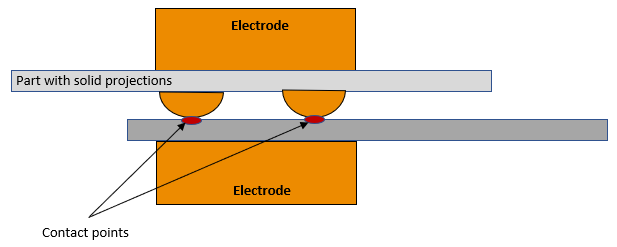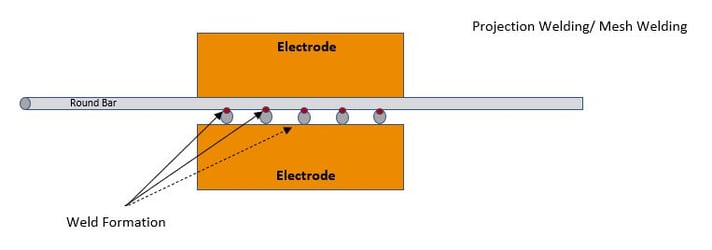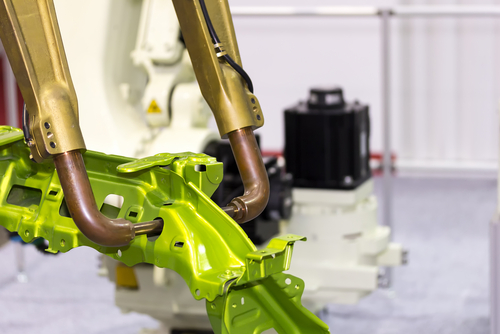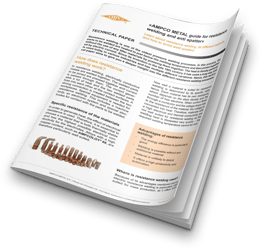Resistance welding is a commonly used process to join metal parts together by the use of electric current and pressure. There are several different methods, all with their own unique advantages and areas of application.
Resistance welding is a welding process in which two or more metals are joined with the help of electric current and pressure. The workpieces are heated to such an extent that they melt at the welding point and join together. Spot welding is probably the most frequently used resistance welding process. In addition, seam welding is also frequently used. In addition to these two methods, however, there are other processes that belong to resistance welding.
What is projection welding?
Projection welding is a very powerful welding process. In contrast to spot welding, it allows several points to be welded simultaneously during one work step. Therefore, one or more welding projections are attached to one of the two workpieces to be joined. The workpieces now lie between these welding projections. The current flows through these welding projections in a concentrated manner and ensures that they heat up and ultimately melt.

In contrast to spot welding, this process also uses other electrodes. These are usually whole plates made of copper. Due to these large-surface electrodes, the surface pressure is rather low and the surfaces have a very high quality after welding. As several points can be welded in one step with projection welding, the process is quite cost-efficient.
With projection welding, thicker metal plates can also be welded together. It is a popular welding process especially in the electrical industry, the automotive industry, the construction industry and in general engineering. Very often, fastening elements such as nuts, threaded bolts, but also bushings or reinforcement plates are welded with this process.
What is mesh welding?
Mesh welding, also called cross wire welding, is a special form of projection welding. Here, the welding projections are not specially constructed for the welding process, but are already part of the natural geometry of the components. This is the case with grids, for example. Here, the current flows directly through the contact points of the crossing lattice bars and the welded joint is created at these contact points.

Large-area copper plates are ideally suited as electrodes. Due to its particularly high hardness and strength, AMPCOLOY® 95 is very well suited as an electrode material for cross-wire welding.
What is resistance butt welding?
In resistance butt welding, components with the same cross-section are welded together. A weld seam is produced across the entire cross-section. Especially wire and rod joints with a relatively small diameter are welded with resistance butt welding. In contrast to flash welding, pressure and electric current are applied simultaneously and there is no loss of the welded materials. Furthermore, butt welding is mainly used for welding small parts.
What is resistance flash welding?
Flash butt welding is very similar to resistance butt welding. However, the energy transfer is mainly through the heat of resistance. Moreover, current and pressure is applied alternately rather than simultaneously. The components to be welded are therefore fixed and aligned by the electrodes. From the moment of the first contact, the components are pressed together with a slight compressive force. A current with a high amperage of about 40-100 kA flows at individual points on the contact surfaces. This immediately heats the metal at the contact points to the melting point, it becomes liquid and vaporizes explosively.

The process is very common in rail construction. As the electrodes serve as clamping jaws as well, they must transmit both current and force. This makes them extremely vulnerable to wear. Therefore, alloys such as AMPCOLOY® 83 are used for the electrode material as they provide a high hardness, which greatly reduces the wear.
For further information about resistance welding, please download our free «AMPCO METAL guide for resistance welding and anti spatter»





